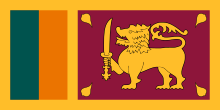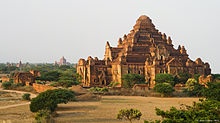
Back بوابة:آسيا Arabic ܬܪܥܐ:ܐܣܝܐ ARC Portal:Asiya Azerbaijani Партал:Азія BE-X-OLD প্রবেশদ্বার:এশিয়া Bengali/Bangla دەروازە:ئاسیا CKB Portal:Asien German Portal:Asya DIQ Πύλη:Ασία Greek Portal:Asia Spanish

 Asia (/ˈeɪʒə/ AY-zhə, UK also /ˈeɪʃə/ AY-shə) is the largest continent in the world by both land area and population. It covers an area of more than 44 million square kilometers, about 30% of Earth's total land area and 8% of Earth's total surface area. The continent, which has long been home to the majority of the human population, was the site of many of the first civilizations. Its 4.7 billion people constitute roughly 60% of the world's population. Asia shares the landmass of Eurasia with Europe, and of Afro-Eurasia with both Europe and Africa. In general terms, it is bounded on the east by the Pacific Ocean, on the south by the Indian Ocean, and on the north by the Arctic Ocean. The border of Asia with Europe is a historical and cultural construct, as there is no clear physical and geographical separation between them. It is somewhat arbitrary and has moved since its first conception in classical antiquity. The division of Eurasia into two continents reflects East–West cultural, linguistic, and ethnic differences, some of which vary on a spectrum rather than with a sharp dividing line. A commonly accepted division places Asia to the east of the Suez Canal separating it from Africa; and to the east of the Turkish Straits, the Ural Mountains and Ural River, and to the south of the Caucasus Mountains and the Caspian and Black seas, separating it from Europe. China and India traded places as the largest economies in the world from 1 to 1800 CE. China was a major economic power for much of recorded history, with the highest GDP per capita until 1500. The Silk Road became the main east–west trading route in the Asian hinterlands while the Straits of Malacca stood as a major sea route. Asia has exhibited economic dynamism as well as robust population growth during the 20th century, but overall population growth has since fallen. Asia was the birthplace of most of the world's mainstream religions including Hinduism, Zoroastrianism, Judaism, Jainism, Buddhism, Confucianism, Taoism, Christianity, Islam, Sikhism, as well as many other religions. (Full article...) Featured articleDhammayangyi Temple (Burmese: ဓမ္မရံကြီးဘုရား, pronounced [dəma̰jàɰ̃dʑí pʰəjá]) is a Buddhist temple located in Bagan, Myanmar. Largest of all the temples in Bagan, the Dhammayan as it is popularly known was built during the reign of King Narathu (1167-1170). Narathu, who came to the throne by assassinating his father Alaungsithu and his elder brother, presumably built this largest temple to atone for his sins. The Dhammayangyi is the widest temple in Bagan, and is built in a plan similar to that of Ananda Temple. Burmese chronicles state that while the construction of the temple was in the process, the king was assassinated by some Indians and thus the temple was not completed. Sinhalese sources however indicate that the king was killed by Sinhalese invaders. (Full article...)Selected Country Sri Lanka, historically known as Ceylon and officially the Democratic Socialist Republic of Sri Lanka, is an island country in South Asia. It lies in the Indian Ocean, southwest of the Bay of Bengal, separated from the Indian peninsula by the Gulf of Mannar and the Palk Strait. It shares a maritime border with the Maldives in the southwest and India in the northwest. Sri Lanka has a population of approximately 22 million and is home to many cultures, languages and ethnicities. The Sinhalese people form the majority of the population, followed by the Sri Lankan Tamils, who are the largest minority group and are concentrated in northern Sri Lanka; both groups have played an influential role in the island's history. Other long-established groups include the Moors, Indian Tamils, Burghers, Malays, Chinese, and Vedda. (Full article...)Featured biographyAbisin Abbas (Indonesian: [aˈbisɪn aˈbas]; 26 February 1902 – 20 October 1961), better known by his pseudonym Andjar Asmara ([anˈdʒar asˈmara]), was a dramatist and filmmaker active in the cinema of the Dutch East Indies. Born in Alahan Panjang, West Sumatra, he first worked as a reporter in Batavia (modern-day Jakarta). He became a writer for the Padangsche Opera in Padang, where he developed a new, dialogue-centric style, which later spread throughout the region. After returning to Batavia in 1929, he spent over a year as a theatre and film critic. In 1930 he joined the Dardanella touring troupe as a writer. He went to India in an unsuccessful bid to film his stage play Dr Samsi. After leaving Dardanella in 1936, Andjar established his own troupe. He also worked at a publishers, writing serials based on successful films. In 1940 he was asked to join The Teng Chun's company, Java Industrial Film, helping with marketing and working as a director for two productions. After the Japanese occupation, during which time he stayed in theatre, Andjar made a brief return to cinema. He directed three films in the late 1940s and wrote four screenplays, which were produced as films in the early 1950s. He published a novel, Noesa Penida (1950). Afterward he worked for the remainder of his life writing serials based on local films and publishing film criticism. Historians recognise him as a pioneer of theatre and one of the first native Indonesian film directors, although he had little creative control of his productions. (Full article...)General imagesThe following are images from various Asia-related articles on Wikipedia. Featured picture Credit: Jakub Hałun Inle Lake is a freshwater lake located in the Nyaungshwe Township of Taunggyi District of Shan State, part of Shan Hills in Myanmar (Burma). It is the second largest lake in Myanmar with an estimated surface area of 44.9 square miles (116 km2), and one of the highest at an elevation of 2,900 feet (880 m). During the dry season, the average water depth is 7 feet (2.1 m), with the deepest point being 12 feet (3.7 m), but during the rainy season this can increase by 5 feet (1.5 m).
Did you know...
Updated: 6:33, 14 February 2024 In the news
Related portalsMajor Religions in Asia Middle East Central Asia and Surroundings Indian Subcontinent Southeast Asia East Asia Selected panorama
Nanga Parbat is the ninth highest mountain on Earth, the second highest mountain in Pakistan and among the eight-thousanders with a summit elevation of 8,126 meters (26,660 ft). TopicsCategoriesAssociated WikimediaThe following Wikimedia Foundation sister projects provide more on this subject:
More portalsShortcuts to this page: Asia portal • P:ASIA Purge server cache |
© MMXXIII Rich X Search. We shall prevail. All rights reserved. Rich X Search





























































































